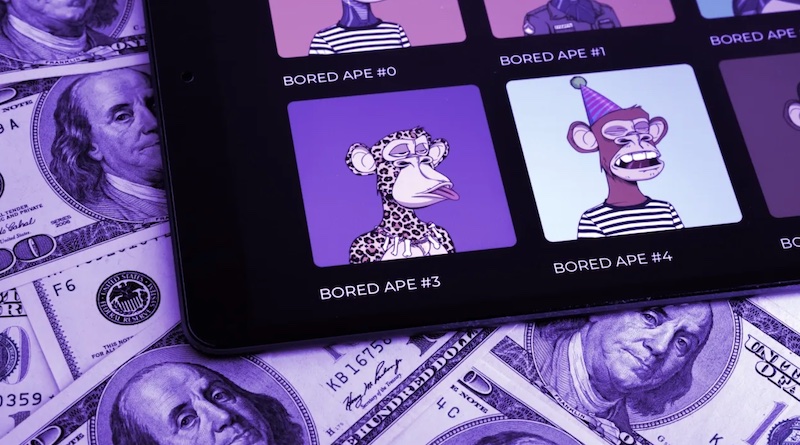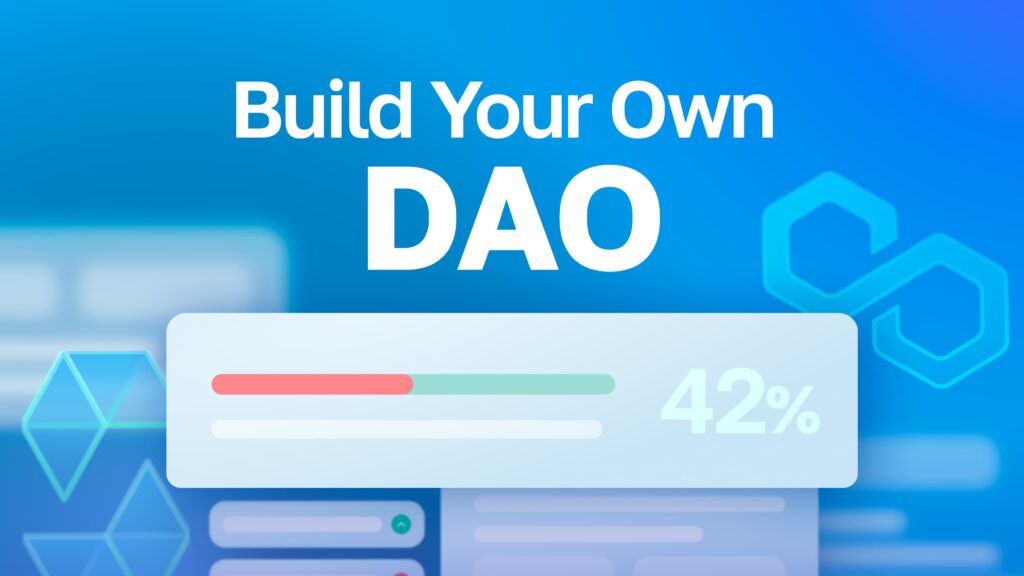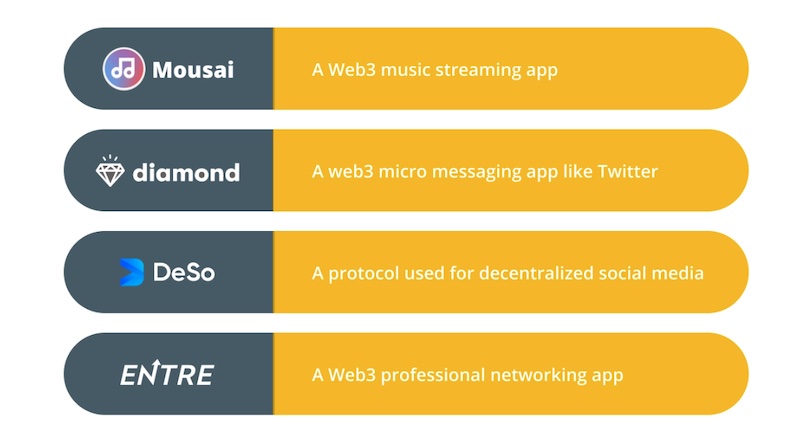SocialFi combines finance and decentralized social media platforms and is Web3’s answer to big tech’s centralized platforms such as Meta and Twitter. But how can SocialFi succeed in a world dominated by these vast Web2 platforms? The short answer is that they’ve got all the money and all the users. Nonetheless, with the power of decentralized autonomous organizations (DAOs), NFTs, cryptocurrencies, and other Web3 inventions, SocialFi could succeed.
Follow along as we take a closer look at what sets SocialFi apart from traditional social media so we can adequately answer the question, “what is SocialFi?”. By doing so, we can also get a better idea of what the future of social media looks like. Moreover, Web3 could be the future of social media and websites. Hence, now is the time to learn blockchain development. If that sounds interesting, check out our guide on how to make a Web3 website.
What is SocialFi?
In the world of SocialFi, influencers, content creators, and participants who want to control their data get the ability to do so. Further, they can better monetize their followers and user engagement. But, what is SocialFi exactly? The short answer is that SocialFi is Web3’s version of a social media platform.
First, it’s where monetization happens via cryptocurrencies. Non-fungible tokens (NFTs) handle digital ownership, and decentralized autonomous organizations (DAOs) control governance. Second, it’s the coming change from the world of Web2, where centralized, censorship-happy decision-makers rule their social media platforms.
So, with the basics under our belt, let’s look at the features of SocialFi in more detail.

Paying the Content Creators
Web2 falls short regarding a creator’s ability to monetize their brand. Further, credibility and a massive social following don’t necessarily translate to money in the influencer’s pocket. That’s because the select few holding the power scarf up the lion’s share of the profits. On the other hand, Web3 applications bring about a fairer system of incentives across the board, from content creators to stakeholders. Furthermore, the DAO model is making it happen, and SocialFi applications take it further with social tokens.
Would you like to build decentralized applications? If so, don’t use primitive tools that slow down the development process. Instead, use Moralis, and learn the fastest way to build a Web3 app!
Social Tokens and Engagement
With SocialFi, social tokens exist at the user level. Any artist, content creator, or influencer interested in developing their brand can have their own. However, these social tokens’ value would vary wildly, depending on the creator’s social clout. Indeed, an influencer such as Elon Musk and his token would carry more weight than someone with 100,000 followers.
Furthermore, influencers could require followers to hold their social tokens before being able to engage with their posts. In this way, any follower who wants to engage with an artist’s content via likes or shares would have to pay for the privilege by buying social tokens.

Other Options For Social Engagement
Influencers could also set threshold minimums regarding social token holdings that limit the followers who can message them directly. Additionally, artists with massive followings could incorporate a subscription model in their social token for those who desire premium access to their content. As you can see, the creative mind can develop many more use cases for social tokens.
SocialFi and NFTs
SocialFi proponents are already testing economic models around the fundamental principles of engagement monetization for participants. Further, SocialFi platforms can offer creators NFT distribution capabilities to help broadcast their work to the greater community. In addition, an artist could use tactics such as sharing the proceeds of their NFT sales with holders of their social tokens. As such, by sharing their success, they create an automatic incentive mechanism for their followers to get the word out, which will ultimately help boost sales.
The crypto market is still in the trough and could be for a while. So, knowing how to invest during a crypto bear market is essential in these downtimes. To learn more, check out our articles at Moralis Academy!
NFTs and Digital Ownership
Web2 apps need help handling digital ownership and how to track it. But the ability to do so is crucial for artists and creators who want to share their work online. Without a way to track digital ownership, the likelihood of abuse such as digital piracy only increases. Further, such unfortunate incidents only hurt the artist. Thankfully, NFTs provide the solution to tracking ownership and proving identity.
Picture for Proof (PFP) NFTs
PFP NFTs exploded on the scene to enhance digital identity like never before. These NFTs serve as profile pictures by the proud holders. While some PFP NFT traders are quick flippers, others take them on as their long-term identity. Moreover, emotional bonds can form between the holder and their PFP NFT, inspiring some to use PFP NFTs as their SocialFi profile. After all, NFTs, by design, symbolize proof of ownership, and holders can confirm this simply by connecting their wallets.
Apart from confirming identity, PFP NFTs can provide exclusive access to SocialFi communities. Such communities could consist of members interested in thought leadership or those looking for sneak peeks into future investment opportunities. Platforms like Discord already offer such outlets, but SocialFi can also capitalize on this feature.
We have plenty of NFT coding tutorials available when you’re ready to build your own.

Social Media Platforms and Censorship
There are many instances of Web2 censorship. It happens when centralized decision-makers de-platform specific content creators for taking a political position with which they disagree. While protocols must protect children and the uninformed from disinformation and harmful posts, a decentralized curation process is much more in line with the Web3 ethos when enforcing such issues.
One of the trickiest problems on Web2 social media platforms is the issue of free speech. More and more people find their rights to speak freely getting curtailed. Censorship is antithetical to freedom and impairs people’s ability to iron out their ideological differences through healthy debate. More importantly, in a free-speech society, the person(s) making the most logical arguments should win the day, so long as the population remains logical.
Free Speech and Central Authority
At the end of the day, most people don’t want a centralized authority dictating which topics they’re allowed to debate and disagree with. At the other end of the spectrum, no one wants “harmful content” peddled, either.
Harmful content is a subjective term, though. Censors can misapply it merely to shut down the opposite side of the political aisle. But whether it’s Web2 or Web3, some speech controls will be in place. That’s because “anything goes” anarchistic platforms quickly open themselves up to all sorts of human depravity.
So, the question is not whether to implement speech controls. Instead, it’s who will decide what can and cannot be said. Should Mark Zuckerberg and his handful of power brokers at Meta determine what is and isn’t disinformation? After all, these controllers will be subject to their own biases, political influence, and big advertiser dollars. When Web2 oligarchs say they want to stop disinformation, do they mean it? Or do they actually want a monopoly on spreading it?

Nodes and On-Chain Data
SocialFi platforms are vastly different in that they rely on a decentralized curation process that involves labeling on-chain data. Furthermore, their publicly viewable posts are on-chain. Hence, they will be subject to rule engines that parse and label them based on their topic and the words they contain. Moreover, the nodes can choose which labels to engage with and which to block.
For example, on a dog lover’s SocialFi platform, nodes could block any label with the word “cat”. Or, they could make exceptions only if “cat” is prefaced with descriptors such as “stupid”, “useless,” or other pejoratives. If the word cat appeared in a post surrounded by adjectives such as “cute”, “funny”, or “fluffy”, nodes could automatically delete or keep the post.
Decentralized Governance with DAOs
In the case of this hypothetical dog lovers’ SocialFi platform, the power to determine what a positive cat post is and how to regulate it would not fall into the hands of a few power brokers. Instead, a larger group of people in the DAO with a stake in the platform’s future could engage in decentralized decision-making to resolve such issues.
Furthermore, nodes that break the rules and allow such indefensible cat praises to appear on the dog lover’s platform could be subject to immediate punishment, like getting their stake slashed. DAOs more tolerant of dissent could monetize the situation by allowing neutral (or even some positive) cat posts so long as the user purchases extra social tokens.

On the other hand, less tolerant DAOs could label the cat posters as enemies of the dog state and force them to choose between banishment or enduring a reeducation camp until they publicly profess doggy supremacy.
With all of the above stated, what is SocialFi? Well, for one thing, it’s a social media platform where a DAO (decentralized autonomous organization) decides on issues of free speech and censorship rather than a handful of chieftains.
SocialFi Challenges
Everything about SocialFi sounds excellent thus far. But there are no utopias. So, what is SocialFi, and what challenges could hinder its potential to disrupt Web2’s social media model? Hopefully, executing the principles of SocialFi will not happen without overcoming some resistance. A few notable challenges are obtaining a scalable infrastructure, a sustainable economic model, and dealing with influencer implosions.
Scalable Infrastructure and Throughput
So, what is SocialFi, and what are its challenges? First, as blockchain technology evolves, SocialFi has to manage the larger throughputs that social media interactions require. The good news is that SocialFi chains can improve throughput by using sharding, warp sync, and other technologies.
Sharding and Warp Sync
Sharding offers parallel processing that boosts throughput by orders of magnitude. Warp sync allows transactions to get validated without all the nodes validating the entire transaction history. With these boosts, SocialFi’s processing power could increase to handle 80 posts per second for a four million user base.
However, even if such estimates are attainable, they still pale compared to the Web2 behemoth Twitter which handles 6,000 posts per second across 300 million users. Likewise, Meta runs over 500,000 comments each minute, and approximately four million platform posts receive a “like”. Can SocialFi blockchains ever handle such user volume?

Solana is a layer-1 (L1) blockchain, and you can find more information about Rust & Solana at Moralis Academy.
Sustainable Economic Model
SocialFi teams are still experimenting with incentives on a small scale to create a sustainable economic model. However, these models need more stress testing through various market cycles before they can get labeled reliable enough to withstand black swan events and other market anomalies.
The Challenge of Influencer Collapse
If you’re still asking, “what is SocialFi?” and are worried about its future challenges, one concern to address is the possibility of an influencer imploding. No one can predict if or when a social media influencer will burn or offend a powerful group. All it takes is one foolish post to cause a massive defection.
Social media thrives in echo chamber environments where herds of people move in lockstep with little tolerance for dissent. So, once a group turns against their former hero, groupthink and bandwagon mentality can quickly start a cascade of losses that could spread to other communities and crash other affiliated social tokens. Furthermore, social token holders stuck in the middle of such a firestorm could suffer significant losses if they don’t dump their tokens before the herd. Once the avalanche of negative public opinion starts, there may not be any potential buyers to unload the social tokens to.
Short Selling Social Tokens
Those who wonder, “what is SocialFi?”, might also contemplate what adverse scenario could impact it. One such situation could play out if powerful short sellers intentionally undermine an influencer to crash their social token’s value. Price swings would depend on how far the short sellers are willing to go to damage a social token’s value.

What is SocialFi? – Conclusion
Herein, we’ve covered a lot of ground. To start, we explored what seems to be the main question on people’s minds, “what is SocialFi?”. We looked at social tokens, SocialFi and NFTs, digital ownership, and much more regarding the future of social media. So, what would you say? Is SocialFi here to stay once the Web3 era reaches mass adoption? All in all, SocialFi looks to disrupt social media as we know it by applying Web3 principles. In doing so, it can bring decentralized social applications to the world.
Despite the challenges of blockchain throughput and potential black swan scenarios with social tokens, SocialFi platforms have a use case and a future. Additionally, the NFT world is accelerating toward creator economies, and SocialFi can help further such an outcome. Moreover, as long as investors continue to pump their mental and financial muscle into SocialFi projects, they can disrupt their Web2 counterparts and thrive.
Now is an excellent time to transition from Web2 to Web3. By learning blockchain development, you can future-proof your career in this domain! Get started on your blockchain developer career by enrolling at Moralis Academy today!







